When tracing isn’t an option, there are still ways to transfer a photo to your drawing surface, and you should learn both of them. They will save time for experienced artists and LOTS of frustration for beginners.
The first method is the slide method.
This will only work if you want the finished work to be the exact size as your reference material, so you may need to use a scanner or photocopier to make an enlargement of your photo before you begin.
First, cut the borders off of your reference material. You need to be able to match the edges of the paper to your drawing exactly the same way every time, and the less white space you have, the easier this will be.
Next, mark the corners of the reference material on your drawing paper, and use masking paper (stuck to something else first to make it less sticky) to mark off the borders all the way around.
Your masked frame should be the same size as the reference material.
Line up the edges of the reference on your drawing paper very carefully, then hold your pencil right above the paper at an important line.
Keep the pencil steady, whisk the paper away, and make the mark in the same place on your drawing paper.
Start with the large, exterior shapes (ouline of the head, neck and shoulders) and work your way in to the features.
So you might start by marking the top, sides, and bottom of the head, and then filling that shape in once you’ve given yourself enough reference marks. You have to double check that your photo is lined up correctly EVERY TIME.
The second method is graphing. Graphing can be used to expand or contract your drawing to whatever size you want it, and is a wonderful way to quickly get the proportions right.
Tape your reference to a piece of paper and use a ruler to find the vertical and horizontal centers. Then measure off some other handy marks; quarters or
thirds work well.
Your drawing paper needs to have the same proportions as the reference photo. Mark off the borders and use a ruler to find the same refernce points that you have on the photo.
To make it easy to know where you are as you work, label the points like you see on the example
Now use the graph to find the essential points on the drawing and transfer them to your drawing.
Each point should have two points of reference. So the top of the head might line up at the half point (B) on the horizontal axis, and a point about a third of the way to point 1 on the vertical axis. The dotted lines on the example will help to clarify this.
Want To Learn More…

So many would-be artist’s overlook this vital foundation when they begin learning to draw. So from there they became disheartened, loose interest and put it in the “too hard” basket.
If you are a quick learner then great but some of us will take a little longer to pick up the required knowledge.
This isn’t a problem. In fact, when you do master it, because you had to work a little harder, you often have a more thorough grasp of the basics.
With that said we have created ‘Photorealistic Portraits’ which builds on your drawing knowledge to take your portrait drawings further.




